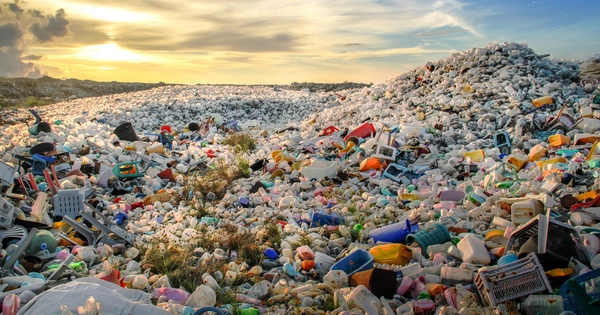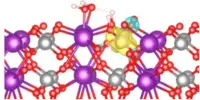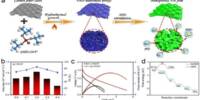Recycling mixed plastics is a major challenge for chemists, as it can be difficult to separate different types of plastics, which have varying properties and require different processing methods. However, researchers are working to develop new technologies that can effectively recycle mixed plastics and reduce the amount of plastic waste that ends up in landfills or oceans.
Polymer chemists have been working on solutions to the environmental problems caused by plastic waste. Now, a team has developed fundamentally new chemistry that paves the way for a novel approach to the problem of recycling mixed-use plastics.
Plastics are ubiquitous in our daily lives, but they are not all created equal.
Consider polyethylene terephthalate, a plastic used in the production of soda bottles and clothing fibers. Then there’s high-density polyethylene, which is used to make shampoo bottles, milk jugs, and cutting boards. Remember polystyrene for packaging, or low-density polyethylene for cling wrap and grocery bags.
The system is so efficient, it compatibilizes three different polymers into a single new material. In a similar way, these new types of dynamically formed ‘soaps,’ i.e. the block copolymers, compatibilize mixed plastics and make them usable as a new kind of material with useful properties.”
Rovis
All of these are plastics, the most common type of polymer – macromolecules composed of repeating units of small molecules known as monomers. Post-consumer plastics are almost always collected as part of a mixed stream of waste, and products are frequently made of two or more types of plastics.
The bad news is that, while all of these items are “plastics,” they are chemically and physically incompatible, and there is no viable industrial method for reusing or re-processing them into other useful products. That’s why the majority of the “recyclables” you toss into bins every weekend up in a landfill. Mechanical recycling, even after careful sorting and separation into individual plastics, usually results in inferior products, a process known as down-cycling.
Polymer chemists at Colorado State University have long been leaders in finding ways to tackle the environmental problems humans have created with plastic waste. Now, they’ve come up with fundamental new chemistry that seeds a creative solution to the challenge of recycling mixed-use plastics.

Dynamic crosslinkers
When heated and processed together with small amounts of dynamic crosslinkers, the mixed plastics become compatible with one another via in-situ formation of a new material known as a multiblock copolymer.
Kumar compared the block copolymers to soap molecules, which make water compatible with oily dirt molecules. “In a similar way, these new types of dynamically formed ‘soaps,’ i.e. the block copolymers, compatibilize mixed plastics and make them usable as a new kind of material with useful properties.”
This new upcycling method, which does not involve deconstructing or reconstructing any of the original polymers, introduces a potential solution for recapturing materials and energy endowed in post-consumer mixed plastics that typically end up in landfills.
The team designed their crosslinkers and tested them on a variety of plastics, including samples of mixed polyethylene Ziploc bags and polylactide cups without prior purification or removal of additives or dyes, which are typically present in post-consumer plastic products. They combined their experiments with modeling studies to verify that the crosslinkers induce the formation of new multiblock copolymers.
“The system is so efficient, it compatibilizes three different polymers into a single new material,” Rovis said.
Multiple use cycles
According to Chen, the researchers believe their new strategy could aid in the ultimate goal of reusing mixed plastic waste over multiple use cycles.
“One major impediment is cost; we’re talking about millions of tons of plastic waste, and you have to consider how many of these dynamic crosslinkers you need, even though we currently require less than 5% of the weight of the plastics in our upcycling process.” Practical obstacles exist at the outset, as with many fundamental discoveries in history, but we are very excited about the future potential.”















